How Dental Practice Hand Hygiene Impacts Infection Control Culture ROI
To be effective, infection control procedures must be simple. The most effective way to implement them is by building an infection control driven culture.

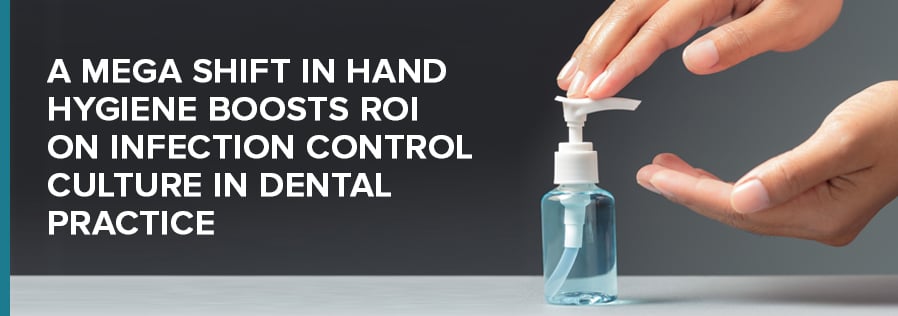
The COVID-19 pandemic has exposed serious flaws in infection prevention, control and management by many governments and organisations, and it has triggered a major shift in hand hygiene. As dental practices scramble to re-engineer and grow business into the future, building public trust and confidence is paramount. While this opens a new avenue of gaining a competitive advantage, it also puts pressure on dental leaders to develop new strategies. The winning strategies will be as much about choosing new cost saving tools as about designing and consistently delivering customer experience that drives return on investment (ROI).
With major advancements in dental care prevention, from medicated dental consumer retails products to professional cleaning and toothbrush technology, there is less need for caries related procedures. On the other hand, extended longevity, combined with a growing, social media sharing, and technology driven interest in physical appearance, generates the demand for cosmetic and discretionary procedures.
Today, customer experience (CX) must be at the heart of every business, and the consistency of quality of service or product delivery is a matter of brand culture.
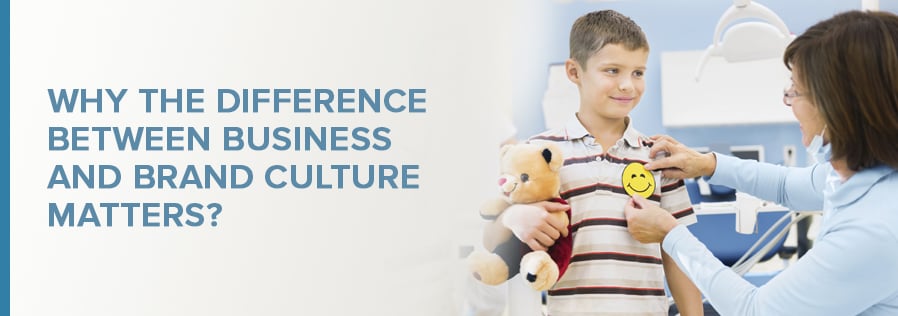
Every organisation has a business culture. Business culture refers to how organisations 'do things’: how they lead, follow, act, speak and look. It is at its best is when employees and leaders do the right thing all the time even when nobody is watching because of the shared sense of ‘what is right’.
What makes it a brand culture is when it is aligned with the goals and desired image of the business in the market. It is a powerful source of competitive advantage for long-term success.
There are four drivers of success for brand culture: Leadership, shared Vision (Purpose), Training, and Simplicity. When these drivers intersect, we see exceptional results of financial success and invaluable social benefits.
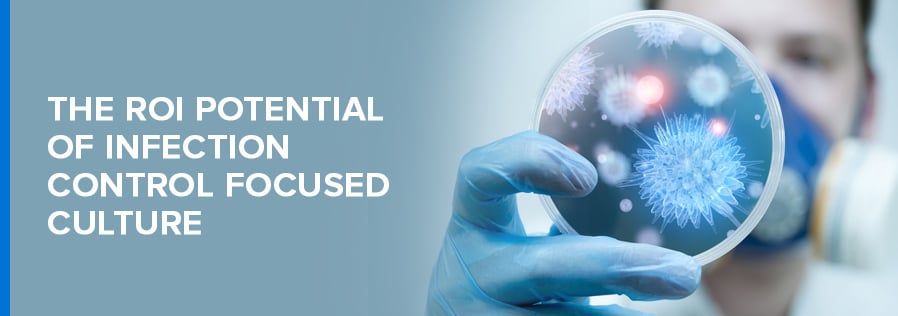
Paul O’Neill, the legendary CEO and Chairman of Alcoa, in his inaugural speech to the Wall Street audience in 1987, famously said, “I want to talk to you about worker safety”.
“If we bring our injury rates down, it will be because the individuals at this company have agreed to become part of something important. They’ve devoted themselves to creating a habit of excellence. Safety will be an indicator that we’re making progress in changing our habits across the entire institution. That’s how we should be judged. I intend to make Alcoa the safest company in America. I intend to go for zero injuries,” he said.
"By the time O’Neill retired in 2000, the company’s annual net income was five times larger than before he arrived, and its market capitalisation had risen by $27 billion. What’s more, all that growth occurred while Alcoa became one of the safest companies in the world,” wrote Charles Duhigg in his bestselling book, The Power of Habit.
The Alcoa example is very relevant to dentistry. Although dental practices generally have a safe record of infection transmission, the inherent risk of infection makes infection control an ideal goal to drive practice success.

To ensure effectiveness of infection prevention, a dental practice must develop appropriate procedures, processes, documentation, and training.
The secret to success here is simplicity. This article offers a five-step approach to building a reliable Infection Prevention and Control (IPC) system. You can start there and make it your checklist.
Step 1.
Appoint your IPC Leader and fully empower this champion with authority and budget, even if it is a job role restructure to free them up to do this work. They will do a better job as a result.
Step 2.
Get the ball rolling by conducting an Audit of your IPC procedures to ensure they fully cover the latest regulations.
Step 3.
Locate key sources that regulate infection control in Australia to guide your procedures and training, starting with the Dental Board of Australia Guidelines on Infection Control. Binding under national law, they stipulate four Documents and Behaviours to which all registered dental practices and registered dental practitioners must have access and observe to prevent and minimise the risk of spreading infectious diseases.
Step 4.
Let’s be clear. Building culture takes some time and it’s an ongoing process of establishing the desired behaviours. So, let’s get started with Hand Hygiene and Environmental Hygiene.
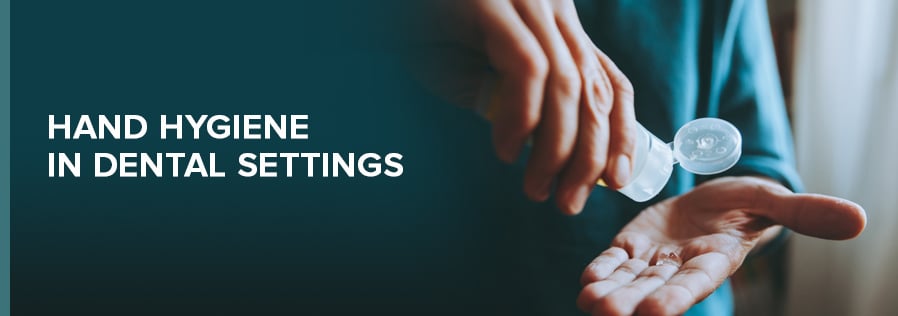
The dental industry has long identified hand hygiene as a major source of infection transmission. Hand hygiene is the number one of Standard Precautions in ADA Guidelines for Infection Control. Yet, according to a study published in the Medical Journal of Australia, many health care workers still find this simple approach confusing.
To make it simple, think of the Five Moments for Hand Hygiene as a series of mental reminders, just like alarms on your mobile phone that alert us when to take certain actions. Rather than clock time, the Five Moments alarm is triggered by situations. If actions themselves are confusing, this should be addressed in training for corrective practice. Repetition will soon build a habit of washing hands in each of these situations.
The cause of not observing hand hygiene may be cultural. Based on the latest Australian data, doctors in general are less compliant with hand hygiene practices than nurses (66% to 83% compliant). This often stems from social influence, whereby doctors and medical students acquire poor habits and attitudes from observing their senior colleagues' practices.
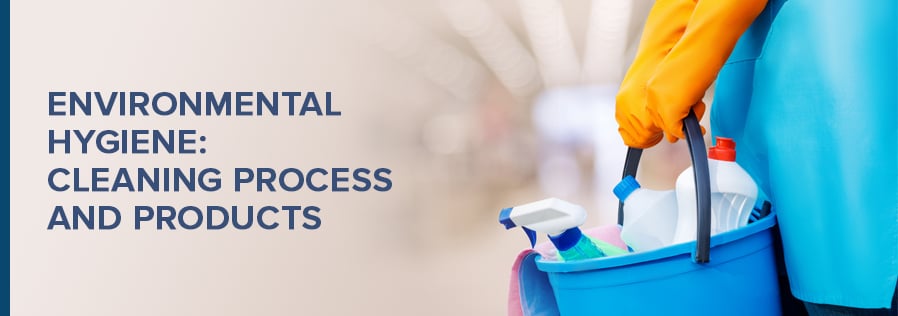
In this post we focus on Australian resources as not to confuse compliance requirements. However, CDC in US boasts some excellent resources worth exploring. But always be mindful to cross-check CDC references against Australian guidelines and terminology.
Environmental dental hygiene consists of cleaning and disinfecting processes that require different cleaning products and methods.
In Australia, dental cleaning products, including disinfectants, are regulated by the Therapeutic Goods Administration (TGA). TGA has published a list of approved products permitted by the Australian Register of Therapeutic Goods (ARTG) to claim that they are effective against SARS-CoV-2 and COVID-19 viruses.
One such product is Everyday Essentials Hospital Grade Disinfectant. It kills Covid-19 in 2 minutes rather than 10 minutes like with other products. This can make a significant difference for dental practices coping with the backlog of patients as services reopen after the lockdown.
Generally, product types used in Australia for environmental cleaning include:
- Towelettes
- IPA Wipes
- Hospital Grade – disinfectants, sprays and wipes.
- Neutral Detergent wipes
This is one area of dental supplies where economy makes sense. Brands such as Everyday Essentials offer a smart choice of Hospital Grade disinfectants, sprays and wipes and IPA or Isopropyl Alcohol (IPA)/Neutral Detergent Wipes.

Leaders could be formally appointed or informal. An infection control initiative in a dental practice must have a formally appointed champion who has the authority to get things done and is visibly supported by senior leaders. Without this support and necessary resources, the infection control initiatives will not gel, and remain ineffective.
They should have the right skills and attitude including the commitment to maintaining up-to-date knowledge and full regulatory compliance.
- Is capable of developing an infection control code of conduct, managing the documentation, reports, emergency plans and any legal or regulatory compliance documentation any other documents relevant to protecting the practice from infection.
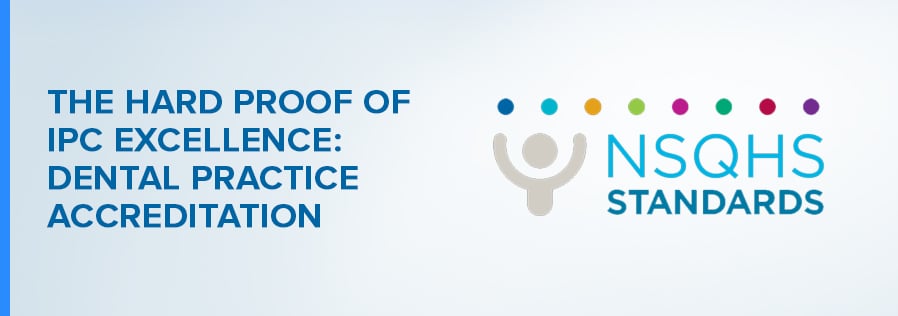
Today, social proof is hard currency for business reputation. It translates into the familiar term: CREDENTIALS. Consistently sharing IPC related content, builds awareness and reputation of the practice for its IPC excellence. And this translates into trust, confidence and advocacy!
In January 2019, the Australian Commission on Safety and Quality in Healthcare, extended the Dental Practice Accreditation opportunity to private dental practices to be accredited to the National Safety and Quality Health Service Standards to improve the safety and quality of dental services.
There are many benefits of getting this Accreditation that help build competitive advantage for the dental practice. Most importantly, it will prove your commitment to the patient safety and infection control excellence. In the COVID-19 era it counts!
Although it sounds counterintuitive, the Accreditation reduces the volume of work when doing it only periodically, further supporting the IPC focused culture.
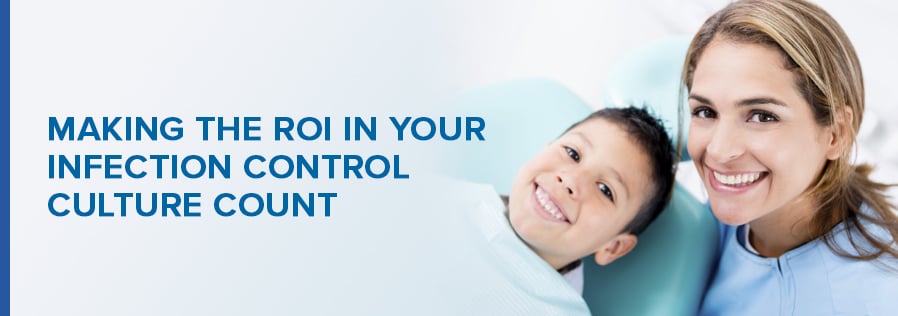
An investment in infection prevention and control culture of excellence, is an investment in building ongoing success through earned trust and confidence of patients and the community. When established, is like a self-oiling machine. The more it is used, the better it performs and delivers growing ROI.
IPC is as much about effective systems as about first impressions. The ROI will further improve by showcasing your commitment to hand and environmental hygiene through visual cleanliness and high visibility of proper and correctly used PPE. Doing it right for themselves, enables all staff to educate patients and visitors about best IPC protocols. And this builds further confidence and reputation for the dental practice.
Importantly, ‘teaching’ others, develops both dentists and staff into IPC experts, giving them the sense of ownership and contribution to the IPC culture. It becomes an intrinsic reward which also helps drive employee engagement and loyalty.
Conclusion
The key takeaway from this article is that a business culture in a dental practice, built around infection prevention and control (IPC) can deliver outstanding business results and ROI on the bottom line. Most of all, it will ensure complete safety and a better quality of the dental team, patients and their communities.
If you need extra information or support with choosing the right supplies to promote infection control for your dental practice, call 1800 422 227 to speak to a friendly expert. And feel free to visit https://www.arkhealth.com.au/